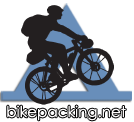Loop Route:
https://www.trailforks.com/ridelog/planner/view/49819/ or
https://ridewithgps.com/trips/31334159 500 Km currently 40% singletrack 30% gravel 30% pavement (changing to 40%ST 45%G 15%P after completion of a rail trail, and when considering time rather than distance the percentage estimate for the loop route is 80% singletrack 15% gravel 5% pavement)
A to B Route:
https://www.trailforks.com/ridelog/planner/view/49870 348 Km currently 45% singletrack 25% gravel 30% pavement (changing to 45%ST 35%G 20%P, or 81% 12%G 7%P for time)
Goal: to link as many high quality single track mtn bikes trails (constructed to modern trail standards) in the Interior of BC, Canada
Destination Trails include:
- Larch Hill Traverse
http://www.shuswaptrails.com/trails.php?id=1- Kalamalka Lake
https://www.trailforks.com/region/kalamalka-lake/- Okanagan High Rim Trail
https://www.highrimtrail.ca/Linked with valley rail trails
- Okanagan Rail Trail
https://okanaganrailtrail.ca/- Shuswap Rail Trail
https://news.totabc.org/2018/01/16/sicamous-to-armstrong-rail-trail-takes-a-giant-step-forward/This is an attempt to create a Canadian version of the Arizona Trail Race or Oregon Timber Trail. A route that is primarily mtn bike oriented (there are lots of Canadian gravel grinders already or routes without publicly accessible re-supply options).
Although the percentage of singletrack may seem low compared to the AZTR, the percentage estimate for this route is for honest hiking trail or purpose built singletrack, and does not include the overgrown doubletrack/skid roads and does not have such a high percentage of hike a bike. The percentage of pavement could be reduced even further, but at the expense of using active logging roads, gravel highways open to all motor vehicles (you will get dusted and potentially could get run off the road for looking like a MAMIL or hippy, such as with the Tour Divide route and the Redneck-ington portion of the AZTR), or off-road motor vehicle recreation areas (dust and roost)). Most of the paved road is on back roads. And where using major highways, there are wide shoulders.
Drop bar and/or fully rigid bikes may be a little easier on the paved and gravel sections, but will be way more difficult than a dual suspension mtn bike with seat dropper on the singletrack sections.
Once the Shuswap Rail Trail is completed, ~40 Km (one way) of the paved public roadway route will be changed to the gravel rail trail
I've ridden many of the sections already and will be checking out other sections for changes to trail conditions later in the spring
Best time to ride is likely early July or after forest fire season ends (best overall conditions might be during the frequent dry spells mid September to late October)
ps; There was a "Divide" in the original thread title, and there is a watershed divide between the Shuswap and the Okanagan (Shuswap flows into the Thompson then the Fraser and out to the Pacific by Vancouver, BC; whereas, the Okanagan flows across the US border into the Okan
Ogan to the Columbia and out to the Pacific past Vancouver Washington)

